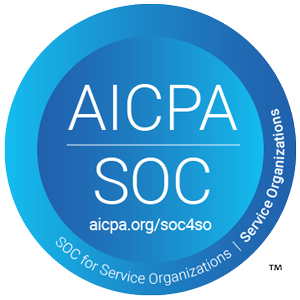Having worked with some of the world’s most innovative companies over the past 15 years, Brightidea has seen where idea management can come up short.
The ability to crowdsource ideas from your employees, customers, and others can be a powerful tool to stimulate innovation – if done right. But too often, companies fail to achieve the promise of collaborative innovation. To help you beat those odds, here are 5 common mistakes that typically plague idea management processes – and how you can avoid them:
1. Going It Alone
One of the biggest mistakes occurs when an innovation team kicks off their program without the appropriate buy-in and sponsorship. This typically dooms your program to failure from the outset. Why? Because without top-down executive endorsement that ties the program to corporate objectives and a strong voice within the business excited to take action on the best ideas, the program will quickly lose momentum and only deliver a database of aging ideas. Employees won’t value it as part of their day job and participation will be poor.
Remedy: You need both strong executive sponsorship and strong business unit sponsorship to build and maintain excitement around the innovation program, the targeted innovation topics and the idea management process. This will set the program up for success from the beginning and ensure ongoing, inspired employee participation.
2. Focusing on the Front End
Many companies start off their collaborative innovation program thinking only about the “idea gathering” phase of idea management, and fail to consider the complete “end-to-end” process. They make a big marketing push to get their employees to submit ideas, which they do, and end up with a pile of ideas and no way to evaluate them – and worse yet, no one to take action on the ideas. As a result, the employees aren’t given any feedback on their ideas and lose interest.
Remedy: Treat idea management as an end-to-end process. Initial engagement isn’t everything, and if it’s your entire focus, your program will fail. You need a systematic process for guiding effort on targeted topics, vetting ideas and selecting the best ones for implementation to achieve a financial return. Without implementation, there is no innovation.
3. Using General Purpose Platforms
Companies often attempt to “shoehorn” a general-purpose technology like SharePoint into an idea management solution. We know this because we’re commonly asked to replace these systems. Companies choose this ill-advised route for many reasons: Perhaps the IT department mandates it or maybe it’s a cost-effective way to start since IT already has invested in it. But it is inevitably a bad decision, because these tools aren’t designed to facilitate an idea management process. They work as “idea gathering portals,” but lack capabilities to move ideas through an evaluation and shortlisting process. So, much like focusing on the engagement part of the process mentioned above, you end up with a pile of ideas that disappear into a black hole never to be seen again. And companies often neglect to consider the internal cost of IT resources involved to stand up and operate a general-purpose platform.
Remedy: Don’t use general-purpose tools for something as specialized and important as idea management. You need a purpose-built innovation platform, like Brightidea. Just as you wouldn’t (and shouldn’t) use SharePoint as your CRM to manage sales or a homegrown system to manage your financials, using general-purpose tools to manage something as mission-critical to your company as innovation does little beyond waste your time.
4. Being Blinded by Science
Some companies would have you believe that their ‘marvelous discoveries’ in crowd science and algorithms practically make people obsolete in terms of idea management. While they keep data scientists gainfully employed, the practical reality is that after many years of pitching their theories, there is no practical evidence that this science offers any tangible benefit to the idea management process.
Remedy: Don’t believe the hype. Nothing replaces the insight and expertise of your people to make idea management decisions. Focus on technology that supports this people-driven process – tools that effectively engage key stakeholders in key activities across the entire process, from your innovation team, your employee innovators, as well as subject matter experts, and business sponsors.
The premise of Brightidea’s “People-Powered Methodology” is that Man + Machine is more powerful than technology or people alone. Our software and approach are designed to help companies take advantage of the full creative capacity of their people through crowd-driven technology and data-driven insight to create a scalable core-competency and drive cultural transformation.
5. Not Measuring Results
Innovation teams have limited time to demonstrate tangible results from their program. Innovation teams lacking tangible data and visible evidence of implemented ideas to demonstrate program value/results run the risk of losing funding and having their innovation program shut down.
Remedy: Tracking and measuring tangible outcomes is the most important aspect of the idea management process. Success is just a story until there is hard data to back it up. At Brightidea we measure multiple types of success to ensure a holistic view. We make your results data readily accessible via numerous metrics, so investment in your Innovation Program is easy for management to justify.
Summary
Effective idea management is key to getting collaborative innovation right. Without a system in place, you’ll fail. Not all systems are created equal though – be SURE to select one that helps harness the people-powered ideas in your organization and manage them through to implemented projects with tangible financial outcomes. Reach out and we’ll tell you more about why this is critical and how fast you can have your own system in place!
Please share your comments below and check out Brightidea’s paper Taking Ideas to Reality: Defining the Next Steps in Your Innovation Program.


